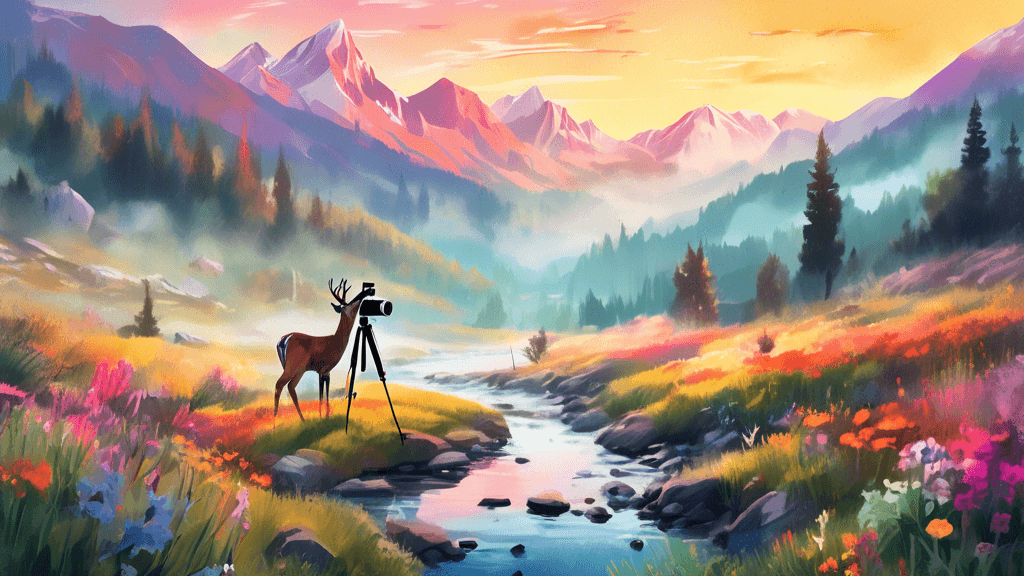
Capturing the Wild: A Beginner's Guide to Wilderness Photography
Share
Introduction to Wilderness Photography
Do you feel drawn to the untamed beauty of the natural world? Are you eager to capture the breathtaking landscapes and the secretive wildlife that inhabits them? Wilderness photography can be one of the most rewarding pursuits, both as an art form and as a profound way to connect with nature. But where does one begin in this vast field?
This guide is designed for beginners who are passionate about exploring and preserving the beauty of the wild through the lens of their camera. Whether you are looking to improve your photographic skills or understand the best practices for ethical wildlife photography, this guide will provide you with the foundational knowledge you need.
Understanding Your Equipment
First and foremost, knowing your equipment is essential. You don’t need the most expensive camera setup to capture great photographs, but you do need to understand the capabilities and limitations of your gear.
Choosing the Right Camera and Lens
For wilderness photography, a digital single-lens reflex (DSLR) or a mirrorless camera is preferred due to their versatility and high image quality. When it comes to lenses, consider the following:
- Wide-angle lens: Ideal for expansive landscapes and sky photography.
- Telephoto lens: Essential for wildlife photography, allowing you to maintain a safe distance from your subjects.
- Macro lens: Perfect for capturing detailed shots of plants and insects.
Understanding the settings on your camera is crucial. Learn how to adjust the aperture, shutter speed, and ISO to optimize your shots for different lighting conditions and subjects. For instance, wildlife photography often requires a fast shutter speed to capture quick movements clearly.
Mastering the Art of Composition
Composing your shot is more than just aiming your camera at the subject. It involves arranging visual elements harmoniously to enhance the overall impact of the photograph.
Key Composition Techniques
- The Rule of Thirds: Imagine dividing your image into thirds both horizontally and vertically. Place your main subject at the intersections or along these lines to create a balanced composition.
- Leading Lines: Use natural lines like rivers, trails, or tree branches to lead the viewer’s eye into the main subject of your photograph.
- Frame within a Frame: Frame your subject using natural elements like tree branches or rock formations to add depth and focus to your image.
Navigating the Great Outdoors
Wilderness photography also demands a level of comfort and proficiency in outdoor skills. Whether you’re navigating through a local forest or planning an expedition in the mountains, being prepared is key.
Essential Outdoor Skills for Photographers
Before heading out, make sure you are familiar with basic survival skills, know how to read a map and use a compass, and can recognize local wildlife hazards. Here are a few tips:
- Always inform someone about your photography plans and location.
- Carry essentials such as water, snacks, extra clothing, and a first-aid kit.
- Understand weather patterns and prepare accordingly to protect yourself and your equipment from harsh conditions.
Practicing Ethical Wildlife Photography
As wilderness photographers, we have a responsibility to minimize our impact on the natural environments we cherish. Ethical practices ensure the safety and preservation of wildlife for future generations to admire and study.
Guidelines for Ethical Photography
- Keep a respectful distance from wildlife. Use your zoom lens instead of getting too close.
- Avoid using flash which can startle or harm animals.
- Never bait or disturb animals to get a shot. Patience is key in capturing natural behavior.
- Stay on marked trails and abide by local conservation rules at all times.
Conclusion
Embarking on the journey of wilderness photography can profoundly enrich your appreciation for nature and help develop your skills as a photographer. Remember, the goal is not just to take beautiful pictures, but also to highlight the importance of preserving the fragile ecosystems we visit.
Start small, perhaps with local parks or nearby nature reserves, and gradually build your skills and confidence. Wilderness photography is not just about the moments you capture, but also the experiences you gain and the stories you can later tell.
Are you ready to capture the wild? Grab your camera, immerse yourself in learning, and step out into the great outdoors to start your photographic adventure!





